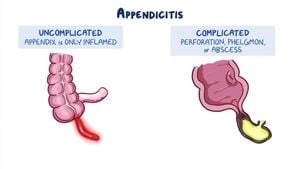Urban environments are not merely the backdrop of our daily lives—they significantly influence our mental health and happiness. A recent study conducted in Kashiwa-no-ha, Chiba Prefecture, Japan, reveals intriguing associations between perceived urban environment elements and both momentary well-being (MWB) and long-term well-being (LWB). This study utilized the experience sampling method (ESM), allowing researchers to gather real-time data on participants' moods, surroundings, and satisfaction.
Well-being extends far beyond physical health, encapsulating emotional and psychological aspects of life. The study aimed to explore the interplay between individual perceptions of urban environments and both immediate happiness and overarching life satisfaction. It filled significant gaps as earlier research often concentrated strictly on LWB without delving deeply enough to understand how different environmental factors impact MWB, which reflects short-term emotional states.
The researchers launched their investigation by targeting residents of Kashiwa-no-ha, a suburb of Tokyo, which merges cutting-edge urban living with natural landscapes. Participants received smartphone prompts to report their feelings about their surroundings at various times, contributing nearly 1,000 individual reports over three weeks. An impressive 273 participants filled out initial questionnaires on demographics and well-being, which created the backbone for analyzing patterns.
The findings indicated clear relationships between MWB and urban settings. For those who reported spending time at cafés and public spaces, observers noticed marked increases in MWB. The results highlighted the significance of social interaction and leisurely activities inherent to urban locales. Specifically, environments perceived as “relaxing and clean” positively influenced MWB, whereas locations characterized by vibrancy were paradoxically linked to lower MWB.
The study's statistical analysis delineated the factors contributing to LWB as well. LWB demonstrated positive associations with cultural, sports, and educational facilities, with researchers discovering contexts where social capital, derived from regular interactions, contributed to higher reported levels of life satisfaction. Interestingly, lower household income and higher psychological distress correlated negatively with LWB, illustrating socio-economic impacts on mental health.
Enhanced interaction, relaxation, and connections to nature were principal environmental characteristics associated with optimally high levels of well-being. "These elements serve as important interventions in urban planning," the authors articulated, encouraging stakeholder engagement across sectors to design urban landscapes fostering such conditions.
Overall, findings revealed how city planning and design are pivotal to enhancing public well-being. Urban parks, communal spaces, and easily navigable areas were linked with increased psychological health, emphasizing the necessity for strategic investment in public amenities. The authors pointed out, "MWB was associated with various built environments, emphasizing the need for places like parks and cafés..."
Through their innovative approach, the study seeks to inform future city designs and support policymakers aiming to create environments conducive to psychological well-being. By prioritizing public spaces and enhancing neighborhood features, city planners can decrease aspects fostering emotional distress, such as crowded and chaotic areas.



